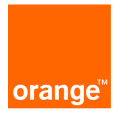Home » Overview of Greenspector Studio
The SaaS solution for the efficiency and performance of your mobile and web applications.
Prepare and launch user journey measurements on our remote devices. Choose the device model and network according to your test goals.
Identify areas of excessive consumption, performance issues, and improve the efficiency of the journey!

Simple in appearance, the Greenspector ecoscore is based on a comprehensive analysis of all steps in the user journey, across three different axes, taking into account the critical nature of the steps measured. The Greenspector ecoscore is truly representative of the efficiency of your journey.
With Greenspector Studio, get a rigorous and accurate assessment of your carbon footprint and other environmental indicators. –> learn more about impacts (methodology, indicators, etc.)
Describing a user journey is quick and easy with GDSL, our exclusive language. It consists of simple keywords (click, wait, etc.) that are powerful enough to accurately reproduce even the most complex user journeys.
Use a single language for your Android, iOS and web journeys.


Select the device model that suits your testing objectives.
A ‘medium’ device for routine measurements, or an older model to check whether the journey can be completed by less privileged users? And why not use a 3G connection to test the journey’s dependence on network quality?
To test your business applications, ask us to add a device from your own mobile fleet to the test bench (option).

The comprehensive dashboard allows you to quickly identify problem areas in your app: excessive energy consumption, performance issues, query or third-party service problems, etc. The interface offers several levels of detail, from the simplest to the most detailed, to help your entire team understand.
Group items by functional domain for easier reading.
You know which steps to improve to increase efficiency, improve performance and reduce impact. You can prioritise your efforts effectively.

Launch a measurement before each release to avoid anomalies, and manage by monitoring the evolution of indicators.
Use APIs to trigger tests from your CI/CD (GitLab CI, Azure CI, Jenkins, etc.). Use other APIs to export results to your own dashboards.

Not all your teams are at the same stage or have the same availability. How can you get an initial idea of the impact of your products without disrupting their work?
With our integrated WebMark test, you can get a score and carbon impact for any page in just one click. The same applies to Android apps with AppMark.

To go further, observe additional metrics that allow you to analyse the behaviour of the software in detail (energy, incoming/outgoing data, CPU, memory, Android system metrics, etc. Some metrics are only available on Android devices).
Direct and ultra-precise measurement of battery consumption throughout the user journey provides a new perspective on the behaviour of your application.
Working on efficiency clearly leads to a more effective application.

Julien AZRIA
Digital Front Chapter Leader, Crédit Agricole Technologie & Services
Some features described may not be available depending on the subscription level you have purchased. Please refer to our Pricing page





